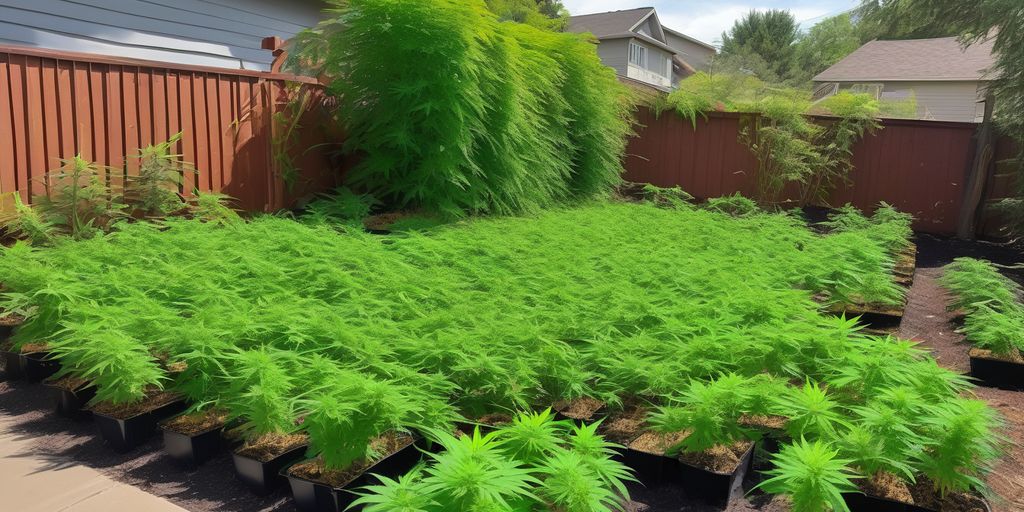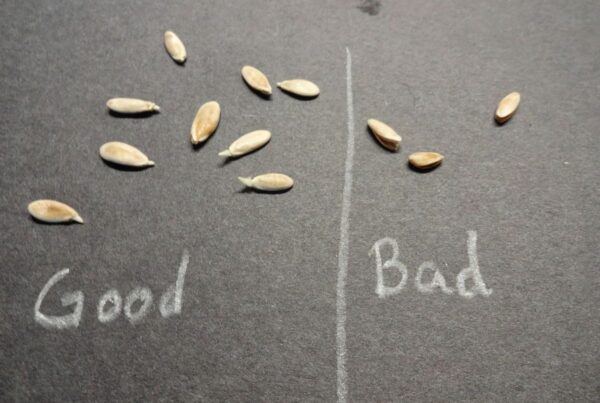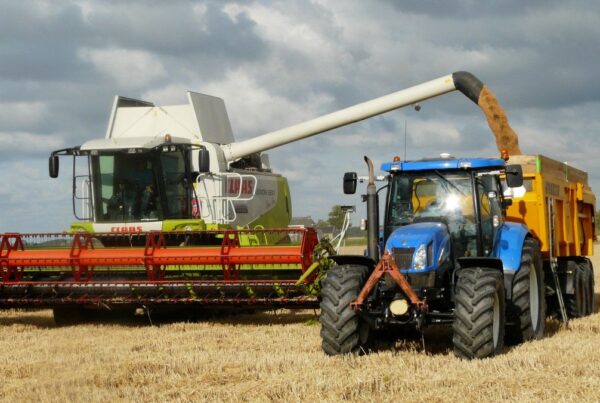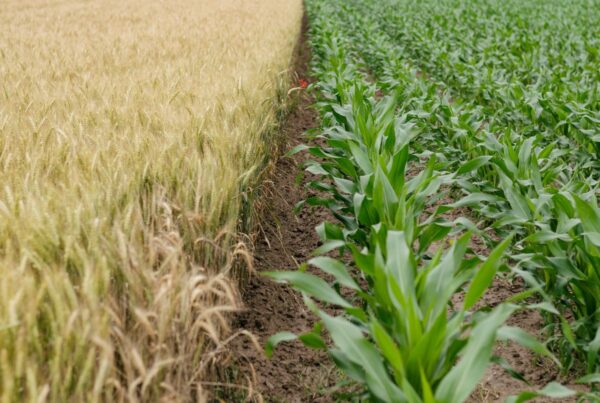Mulching is an essential practice in cannabis cultivation, offering a plethora of benefits that enhance the growth and health of the plants. By covering the soil with organic materials such as leaves or seaweed, mulching helps in moisture retention, temperature regulation, and weed suppression, all of which contribute to a more robust cannabis garden. This article delves into the various aspects of mulching, from the basics of application to advanced techniques, aiming to equip both novice and experienced cultivators with the knowledge to effectively use mulch in their cannabis operations.
Key Takeaways
- Mulching is a cost-effective method to improve soil health and plant vitality in cannabis cultivation.
- It aids in moisture retention, reduces weed growth, and regulates soil temperature.
- Appropriate mulching materials include leaves, bark, and seaweed, each with specific benefits and drawbacks.
- Proper application involves maintaining a balanced mulch depth to avoid issues such as root rot.
- Advanced mulching techniques can integrate with pest management strategies to enhance overall plant health.
The Lowdown on Mulching: Your Cannabis Garden’s Best Friend
What is Mulching in the Cannabis World?
Alright folks, let’s get down to the nitty-gritty. Mulching—it’s not just for your grandma’s petunias! In the cannabis world, it’s like giving your plants a cozy blanket, except this blanket also feeds them and keeps the baddies (like weeds and pests) away. It’s a simple trick to make your plants thrive with minimal fuss.
Why Mulching Rocks for Outdoor Cannabis
Now, if you’re growing the green outdoors, mulching is your best pal. It keeps the soil moist, so you can say goodbye to watering your plants every darn day. Plus, it helps prevent soil erosion, a real issue when those Southern Oklahoma storms hit. Think of it as your garden’s armor against the elements.
Indoor Mulching: Is It Worth It?
And for those of you wondering about indoor grows—yes, mulching can work wonders even under your roof. It helps maintain humidity levels and keeps your soil from going stale. Just be sure not to overdo it, or you might end up with more moisture than you bargained for!
Choosing Your Mulch: From Leaves to Seaweed
Types of Mulch Suitable for Cannabis
When it comes to mulching your cannabis plants, you’ve got a smorgasbord of options. Dry leaves are a no-brainer—they’re like the comfort food for your plants, providing a cozy, natural bed. Then there’s seaweed, or as I like to call it, the sushi of mulches. It’s packed with nutrients and gives your plants a taste of the ocean. Don’t forget about wood chips and bark, which are like the sturdy jeans of the mulch world—reliable and hard-wearing.
The Pros and Cons of Different Mulches
Every mulch has its mood. Dry leaves are fantastic for insulation but can blow away if you sneeze too hard. Seaweed is nutrient-rich but can get a bit smelly, like a fish market on a hot day. Wood chips are great for the long haul but can be a bit too chunky for more delicate plants. It’s all about finding the right fit for your cannabis crew.
How to Source Your Mulch Economically
Let’s talk mulch economics. You can buy it, sure, but why not go on a mulch scavenger hunt? Dry leaves? Check your backyard. Seaweed? Take a trip to the beach (and maybe grab some ice cream while you’re at it). Wood chips? Hit up a local woodworking shop—they might just give it to you for free. It’s all about being resourceful and keeping those costs down.
Remember, the best mulch is like a good buddy—it’s there to support your plants by keeping them warm and well-fed.
Laying It Down: How to Properly Apply Mulch
Step-by-Step Mulching Guide
Alright folks, let’s get our hands dirty! First things first, clear out any unwanted guests like weeds or debris from your plot. Next up, loosen that soil up a bit to welcome the mulch. Now, lay down your chosen mulch—be it straw, leaves, or something fancier—around your cannabis plants. Aim for a cozy 2-3 inches of coverage. Remember, it’s like tucking your plants in for a good night’s sleep!
Avoiding Common Mulching Mistakes
Now, I know it’s tempting to just throw on that mulch like you’re seasoning a brisket, but hold your horses! Too much mulch can suffocate your plants, and too little is just a tease for them. Find that Goldilocks zone. Also, keep the mulch a few inches away from the plant stems to prevent moisture-related issues and the dreaded root rot.
Maintaining Optimal Mulch Depth
Keeping an eye on your mulch depth throughout the season is crucial. You might need to add a bit more after a few heavy rains or a particularly windy day. It’s all about maintaining that perfect mulch mattress for your green ladies to rest in. Keep it at about 2-3 inches—thick enough to protect and nourish, but not so thick that your plants feel smothered.
The Perks of Mulching: More Than Just Moisture
Boosting Soil Health and Structure
Mulching isn’t just about keeping the dirt moist; it’s a full-on spa treatment for your soil! By adding a layer of mulch, you’re not only helping to prevent soil compaction and erosion, but you’re also giving your cannabis plants a cushy bed to thrive in. It’s like upgrading from a sleeping bag to a memory foam mattress!
Enhancing Microbial Activity
Think of mulch as the ultimate party host for microbes. It provides all the essentials: food, shelter, and a great environment. This get-together results in a healthier soil ecosystem, which means better nutrient uptake for your plants. Remember, happy microbes make for happy cannabis!
Temperature Control Benefits
Mulch is the unsung hero when it comes to regulating soil temperature. Whether it’s scorching summer or a chilly fall, mulch keeps the soil temperature just right, making it a comfy home for your plant’s roots. This not only helps in saving water but also ensures your plants are stress-free, which is crucial for those top-notch terpenes and cannabinoids.
Troubleshooting Common Mulching Issues
Dealing with Excess Moisture
Oh boy, too much moisture can turn your mulch from a friend to a foe real quick! If you’re seeing more water than a duck pond, it’s time to check your mulch setup. Ensure proper drainage by mixing in some coarser materials like straw or bark. This tweak can keep your cannabis happy and prevent it from swimming instead of growing!
Preventing Root Rot
Root rot is like that uninvited guest at your garden party—it just ruins everything. To keep this party pooper away, make sure your mulch isn’t piled up against the stems. A good rule of thumb is to keep a few inches of breathing room around your plant bases. This simple step can be a game-changer in keeping your cannabis roots healthy and rot-free.
When to Replace Your Mulch
Mulch isn’t forever, folks! As it breaks down, it loses its mojo. You’ll want to refresh your mulch layer periodically to keep the benefits coming. How often? Well, it depends on the type of mulch, but a good sign it’s time is when you start seeing that it’s more soil than mulch. Keep an eye on it, and don’t let your mulch retire on the job!
Mulching and Water Conservation: A Dynamic Duo
How Mulching Reduces Watering Needs
Mulching is like a superhero cape for your soil, especially down here in southern Oklahoma where the sun beats down like it’s got something to prove. By covering the soil with a good layer of mulch, you’re not just dressing it up—you’re helping it hold onto moisture like a camel in a desert. This means you can cut down on your watering schedule, which is a win for your water bill and your back.
- Moisture retention: Slows down evaporation.
- Water savings: Reduces the frequency of watering.
- Root protection: Keeps roots cooler and hydrated.
The Impact on Water Quality
When you mulch, you’re not just conserving water; you’re improving its quality too. How? Well, mulch prevents runoff, which means fewer chemicals and sediments end up in our water systems. It’s like having a bouncer at the club, keeping the riff-raff out of your water supply.
- Reduced runoff: Limits the flow of pollutants.
- Enhanced filtration: Acts as a natural filter.
- Healthier ecosystems: Supports aquatic life.
Tips for Efficient Water Use with Mulch
To maximize efficiency and conserve water with mulch, consider the following strategies:
- Choose organic mulches: They improve soil structure and water retention.
- Apply the right amount: Too much can suffocate your plants, too little won’t retain moisture.
- Combine with drip irrigation: For the ultimate water conservation setup.
Remember, it’s not just about slapping some mulch down. It’s about creating a sustainable, water-wise garden that makes every drop count!
From Novice to Pro: Advanced Mulching Techniques
Layering Different Types of Mulch
When you’re ready to step up your mulching game, consider layering different types of mulch. Start with a lighter, organic layer like grass clippings or leaves, then top it off with a heavier, more durable layer like straw or bark. This method not only maximizes moisture retention but also helps in weed suppression and adds a kick to your soil’s nutrient profile.
Timing Your Mulching for Maximum Benefit
Timing is everything, folks! To get the most out of your mulch, apply it right after a good rain or after you’ve watered your plants thoroughly. This locks in moisture and gives your cannabis plants a cozy, moist environment to thrive in. Remember, mulching isn’t just a throw-it-and-go affair; it’s about making sure those roots get the VIP treatment they deserve.
Incorporating Mulch into Integrated Pest Management
Mulch can be a secret weapon in your pest management arsenal. By adding a layer of mulch, you create a barrier that can deter some pests and even encourage beneficial microbes and insects. Combine this with other pest management strategies, and you’ve got yourself a robust defense system that keeps those pesky critters at bay while promoting a healthy, vibrant cannabis garden.
The Future of Mulching in Cannabis Cultivation
Innovations in Mulching Materials
As we look ahead, the mulching game is set to get a whole lot more interesting. We’re not just talking about your grandma’s compost heap anymore. Innovations are brewing, from biodegradable films to mulches that do double duty by fertilizing while they protect. Imagine a mulch that slowly releases nutrients or one that can ward off pests—now that’s multitasking at its finest!
Predictions for Mulching Trends
The mulching world is evolving, and I’m placing my bets on some exciting trends. Expect to see more growers embracing organic and locally sourced mulches, as sustainability takes center stage. Also, don’t be surprised if mulching becomes a key player in automated farming practices. We might just see drones spreading mulch in the near future—talk about high-tech gardening!
How Mulching Can Evolve with Cannabis Farming
As cannabis farming gets more sophisticated, so does mulching. We’re likely to see mulches tailored specifically for cannabis plants, enhancing growth and yield. This could mean mulches that adjust pH levels or even control the microclimate around your plants. It’s all about creating the perfect environment for your green beauties to thrive.
Wrapping It Up: Mulch Ado About Something!
So, there you have it, folks! Mulching isn’t just tossing some old leaves on the ground—it’s a strategic move to boost your cannabis cultivation game. From keeping those pesky weeds at bay to ensuring your plants stay hydrated and happy, mulching is like the Swiss Army knife of gardening tools. Whether you’re a seasoned green thumb or just starting out, don’t skimp on the mulch. Your plants will thank you, and hey, you might just find yourself with the lushest, happiest cannabis on the block. Happy mulching!
Frequently Asked Questions
What is mulching in relation to cannabis plants?
Mulching is the practice of covering the soil above a plant’s roots with organic material like dead leaves or seaweed. This helps trap moisture, deter pests, and provide nutrients, enhancing the overall health and productivity of cannabis plants.
Why is mulching beneficial for outdoor cannabis cultivation?
Mulching is highly recommended for outdoor cannabis growing as it suppresses weeds, retains moisture, regulates temperature, and improves soil structure, leading to healthier plants and better yields.
Can mulching be used for indoor cannabis cultivation?
While mulching is more beneficial outdoors, it can also be used indoors to help retain soil moisture and suppress dust. However, the benefits are more limited compared to outdoor environments.
What types of materials can be used as mulch for cannabis?
Various organic materials can be used as mulch, including dead leaves, bark, paper, and seaweed. Each type of mulch offers different benefits and should be chosen based on specific needs of the cannabis garden.
How should mulch be applied to cannabis plants?
Mulch should be spread evenly around the base of cannabis plants, maintaining a depth of 2-4 inches. It’s important to leave a small gap around the plant stem to prevent excess moisture accumulation which can lead to root rot.
What are common issues associated with mulching in cannabis cultivation?
Common issues include excess moisture leading to root rot, nutrient absorption problems due to overly thick mulch layers, and the need for regular replacement to avoid negative effects on plant health.








